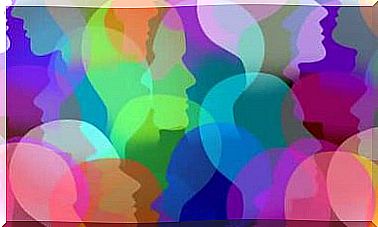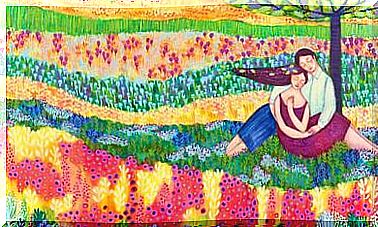Social Neuroscience: The Brain As An Icon Of Our Culture
Something defended by a large number of neuropsychologists is the need to articulate, in the same theoretical scenario, the science of studying the brain with those other areas of knowledge that make up our current world.
In fact, it is increasingly common to hear terms such as “ neuroeconomics ”, “ neuroeducation ”, “ neuromarketing ” or “ neurolinguistics ”, etc.
So the goal couldn’t be more ambitious. It seeks to incorporate into social, cultural, economic and educational theory all research related to the theory of mind, brain, genes, etc.
In this way, we can analyze much better how all the social processes that make up a given society are generated and developed.
Social neuroscience: the need to understand the relationship between mind and culture
We’ve all heard of mirror neurons. It was in 1996 that the team of Giacomo Rizzolatti, a well-known neurologist at the University of Parma (Italy), discovered a curious group of neurons that activated only when people (and also animals) observed the behavior or emotional expressions of their fellow human beings. .
This was a breakthrough in the field of behavioral sciences and biology in addition to social neuroscience. Mirror neurons are those organic foundations that facilitate the understanding of the behavior of others, allowing us to imitate certain actions to learn, in addition to helping us in social interaction. They are, so to speak, the building blocks of our culture.
This fact is just an example, a sample of how our neuronal, hormonal and cellular mechanisms built what we understand as culture and society. Perhaps for this reason, the first interested parties in this field of study were anthropologists from the beginning of the 20th century.
Thus, names such as Robert Hertz, disciple of Émile Durkheim, laid the foundations of this discipline with essays such as those related to the ambidextrous faculties of the Maoris and their brain development in relation to their culture.
The need to create an interdisciplinary science
Following these early work by anthropologists and sociologists to understand the link between the psyche and the development of cultures, psychologists Cacioppo and Berston wanted to go further and create the Society for Social Neuroscience.
This decision was actually a challenge for psychologists and neurologists at the time, because many of them didn’t understand how they could delve into something that extended beyond the confines of the human skull.
However, pressure from countless scientists, sociologists and biologists ended up shaping this area of knowledge, responding to a basic and urgent need. Culture cannot be understood if we do not first understand the mental dynamics that promote the processes that make up our sociological fabric.
We can also say the same for the reverse. Our culture and all of its products, guidelines and schemes determine who we are, how we process information and even what we feel.
It’s a direct and powerful two-way influence. Thus, social neuroscience is a branch of cognitive neuroscience that allows us to understand social behavior and, in turn, understand the mechanisms by which we generate new values, shape new behaviors and needs in a world that never stops changing and following. in front of.
Fields of Study of Social Neuroscience
All cultural and social expression is a product of our brain. Let’s think, for example, of some Beatles song. Any one of them constitutes the essence of a historical moment, as well as a sample of our musical culture.
Now, if we go further, we can also study how and in what way it was created, what neuronal mechanisms shape inventiveness and creativity and how, in turn, this music and these lyrics are capable of moving us today.
On the other hand, an essential aspect that is important to understand about social neuroscience is in relation to its fields of study. We refer to areas in which the neurobiological interrelates with the social. Are the following:
- Theory of mind. This concept refers to our cognitive ability to understand and predict the behavior of others. Likewise, the human being is also able to predict “mental states” in those around him to use this information for his own benefit.
- Empathy and emotions. The study of emotions is a fundamental pillar to understand our social cognitions and behaviors.
- Self-awareness. Self-awareness itself could not happen and be formed in each of us if we didn’t relate to others. Our interactions and the judgments we make about them build our sense of identity, as a study at the University of California’s Department of Psychology explains.
- Attitudes and prejudices. These dimensions have an essential relevance in our social lives and in our identity.
- Social relationships and the social world. In this field of study, we need the collaboration of all these areas that define any society: education, economics, politics, medicine, advertising… They are pieces of a puzzle that builds everything we are and what we do.
As we see, few disciplines can provide such revealing light to all the micro-sociological aspects that shape the shape of a country, a community, a specific social group, and an entire nation.
Therefore, an interdisciplinary approach is needed, where all contributions are not only positive, but also necessary. Social neuroscience can give great answers to the simplest questions we may have ever asked ourselves.









